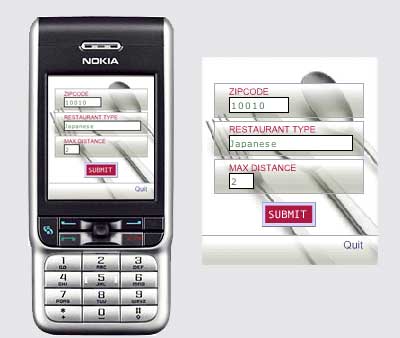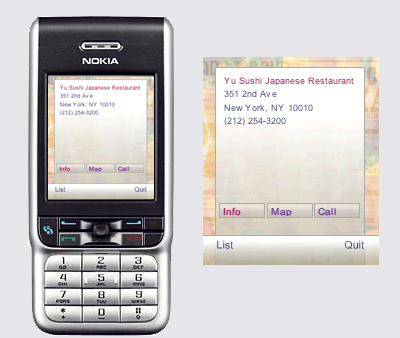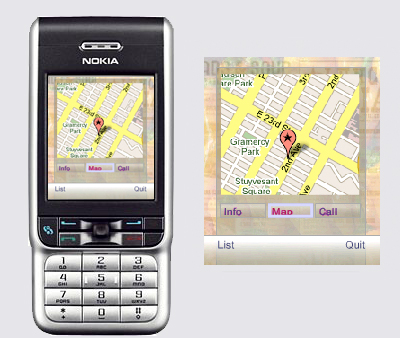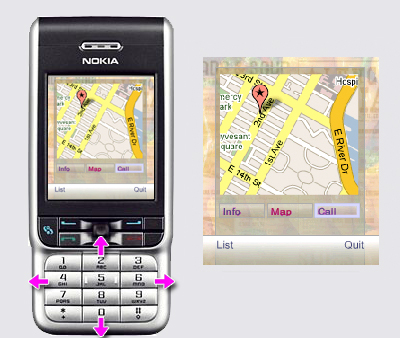




This is a project I am working on with fellow ITP classmate, Fernando Cervantes. He and I have developed this fully operational beta software for the Blackberry and for mobile devices equipped with Adobe/Macromedia's FlashLite player. With a server doing the bulk of the work, users can enter their location information and the type of what cuisine they want. They can also enter the distance they are willing to travel. This feature is particularly useful to pedestrian-dominant populations in urban areas such as New York.
In these five images you can see the basic sequence of interaction. Figure 1 is the information entry point. Each text field anticipates the kind of data input. When the user is required to enter numbers instead of letters (as with zip code) they do not have to press the key several times to opt forward through the alphabetic characters before they get to the number. Pressing the "2" key will produce a "2" with a single press. Figure 2 is a list of the top five returned restaurant listings. The user selects their choice and can see information about that restaurant, see figure 3. At this point they have several new options. They can return to the list. They can request a map, and they can place a call directly to the restaurant without having to enter the number because the mobile device can use the number included in the information originally sent by the server. If they choose to see a map, figure 4, they can find the exact location much like users can already do with the maps services of major search engines. Using the number keys, the user can move the map tile around to see the greater surrounding area without having to zoom out and compromise useful detail.
Fig 1.) 
Fig 2.) 
Fig 3.) 
Fig 4.) 
Fig 5.) 